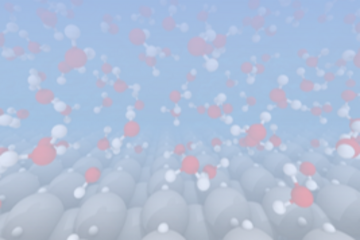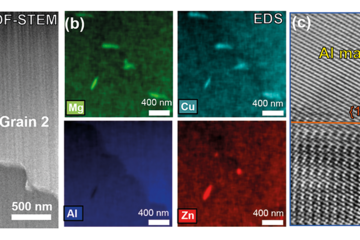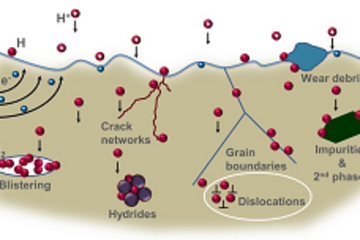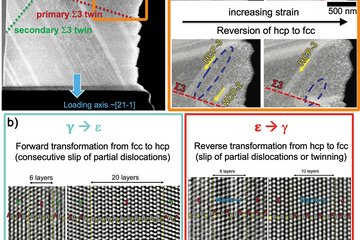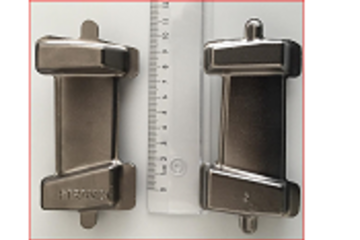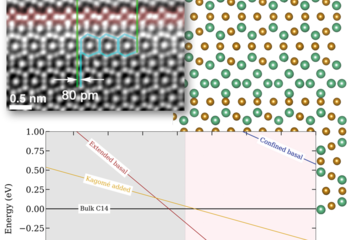All genres
101.
Journal Article
Beating hydrogen with its own weapons: nano-twin gradients enhance embrittlement resistance of a high-entropy alloy. Materials Today 21 (10), pp. 1003 - 1009 (2018)
102.
Journal Article
Cluster hardening in Al-3Mg triggered by small Cu additions. Acta Materialia 161, pp. 12 - 20 (2018)
103.
Journal Article
Segregation assisted grain boundary precipitation in a model Al–Zn–Mg–Cu alloy. Acta Materialia 156, pp. 318 - 329 (2018)
104.
Journal Article
Parameter free quantitative analysis of atom probe data by correlation functions: Application to the precipitation in Al–Zn–Mg–Cu. Scripta Materialia 154, pp. 106 - 110 (2018)
105.
Journal Article
On the origin of the improvement of shape memory effect by precipitating VC in Fe–Mn–Si-based shape memory alloys. Acta Materialia 155, pp. 222 - 235 (2018)
106.
Journal Article
Characterizing solute hydrogen and hydrides in pure and alloyed titanium at the atomic scale. Acta Materialia 150, pp. 273 - 280 (2018)
107.
Journal Article
Hydrogen embrittlement of an interstitial equimolar high-entropy alloy. Corrosion Science 136, pp. 403 - 408 (2018)
108.
Journal Article
Competition between formation of carbides and reversed austenite during tempering of a medium-manganese steel studied by thermodynamic-kinetic simulations and atom probe tomography. Acta Materialia 147, pp. 165 - 175 (2018)
109.
Journal Article
Understanding hot vs. Cold rolled medium manganese steel deformation behavior using in situ microscopic digital image correlation. Materials Science Forum 941, pp. 198 - 205 (2018)
110.
Journal Article
Interfaces and defect composition at the near-atomic scale through atom probe tomography investigations. Journal of Materials Research 33 (23), pp. 4018 - 4030 (2018)
111.
Journal Article
Strengthening and strain hardening mechanisms in a precipitation-hardened high-Mn lightweight steel. Acta Materialia 140, pp. 258 - 273 (2017)
112.
Journal Article
Development of damage-resistant dual-phase steels. Chernye Metally 57 (9), pp. 40 - 41 (2017)
113.
Journal Article
Hydrogen effects on microstructural evolution and passive film characteristics of a duplex stainless steel. Electrochemistry Communucations 79, pp. 28 - 32 (2017)
114.
Journal Article
Ultrastrong steel via minimal lattice misfit and high-density nanoprecipitation. Nature 544 (7651), pp. 460 - 464 (2017)
115.
Journal Article
Hydrogen-assisted failure in Ni-based superalloy 718 studied under in situ hydrogen charging: The role of localized deformation in crack propagation. Acta Materialia 128, pp. 365 - 374 (2017)
116.
Journal Article
Bone-like crack resistance in hierarchical metastable nanolaminate steels. Science 355 (6329), pp. 1055 - 1057 (2017)
117.
Journal Article
Confined chemical and structural states at dislocations in Fe–9wt%Mn steels: A correlative TEM-atom probe study combined with multiscale modelling. Acta Materialia 124, pp. 305 - 315 (2017)
118.
Journal Article
Superplasticity in a lean Fe–Mn–Al steel. Nature Communications 8, 751, pp. 1 - 6 (2017)
119.
Journal Article
The effects of prior austenite grain boundaries and microstructural morphology on the impact toughness of intercritically annealed medium Mn steel. Acta Materialia 122, pp. 199 - 206 (2017)
120.
Journal Article
Entwicklung schadenstoleranter Dualphasenstähle. Stahl und Eisen 137, p. 88 - 88 (2017)




